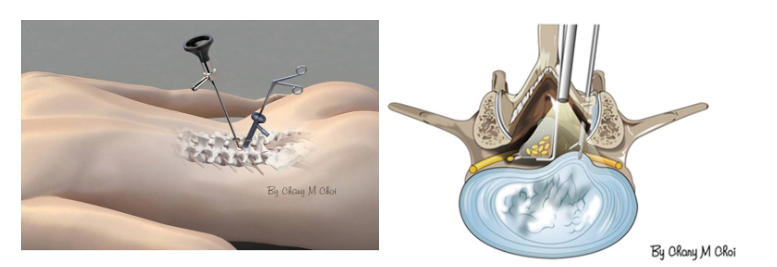By: Thalia Kaylyn Averil
Globally, back pain is the most common musculoskeletal disease and is the main cause of disability. In 2020, 619 million people worldwide suffered from back pain and this is expected to increase to 843 million by 2050 due to aging and population growth. Back pain attacks anyone of all ages, even toddlers and teenagers. The number of cases peaks at the age of 50-55 years and women experience back pain more often than men. Back pain can be dull or sharp and may radiate to other areas of the body, especially the legs. This can impair mobility and productivity and negatively impact quality of life and mental health because back pain may limit a person’s ability to work or interact with others. Therefore, back pain is a serious problem for public health.
Back pain is classified into specific and nonspecific. Specific back pain is a pain that arises due to certain diseases or anatomical problems in the spine. On the other hand, non-specific back pain is a pain that cannot be determined and occurs in more than 90% of cases. This classification helps in determining treatment for back pain. Treatment focuses on curing the underlying condition causing back pain. Activities that can be done to support the treatment of back pain are physical therapy, psychological and social support, exercise, and lifestyle adjustments (for example: exercising more often, balanced diet, getting enough sleep).
In some cases, back pain can be treated with surgery. Endoscopic spine surgery shows promising results, but there are limitations in using surgical instruments around neural structures. Uniportal endoscopic surgery allows direct decompression of specific areas of the spine. However, standard instruments such as nerve retractors and microscopic tools are difficult to pass through a narrow portal in uniportal endoscopic surgery. In addition, a variety of endoscopic procedures have been developed as minimally invasive ways to preserve spinal structures. However, these procedures often focus too much on bones and overlook the importance of ligaments and muscles.
Biportal Endoscopic Spine Surgery (BESS) is a minimally invasive surgical technique used to treat various diseases of the spine such as back pain, stenosis or narrowing of the space in the spine, radiculopathy or pinched nerves, radiculitis or inflammation of nerve roots, spondylosis or degenerative diseases in the spine, herniated disc when one of the spinal discs bulges out, and other spinal diseases. During the procedure, the patient is given general anesthesia and positioned lying face down with the stomach exposed. The doctor will use two small portals through the spaces between muscles in the back of the body to insert special endoscopic tools and surgical tools. Two small portals through the spaces between muscles function to prevent damage to important muscles in the area. Endoscopes can help doctors get a closer view so procedures can be performed with high precision. This procedure is guided by fluoroscopy based on the patient’s condition and uses an assistant nerve retractor to help avoid nerve injury during surgery.

Figure 1. Biportal Endoscopic Spinal Surgery (BESS).
In contrast to uniportal endoscopic surgery, BESS provides a clearer and wider view for better maneuvering of instruments in confined spaces. Therefore, doctors can effectively protect the nerves and spinal structures, ensuring safety for patients with spinal issues. The advantages of BESS compared to other spine operations are minimal damage to surrounding tissue, less blood loss, and lighter post-operative pain. In general, patients have intact nerves and a stable condition after surgery. BESS is an advanced and highly minimally invasive spine surgery that reduces operation duration and accelerates patient recovery. After the surgery, some patients may go home the same day but still require pain relief medication. Patients are expected to be able to drive again within a few days and begin physical therapy 2–3 weeks later. After physical therapy, patients can resume their daily activities as soon as confirmed by a doctor or other healthcare professional.
Abdi Waluyo Hospital has the latest technology in spinal surgery, namely Biportal Endoscopic Spinal Surgery (BESS). This procedure is handled by trained and experienced neurosurgeons. By using a biportal endoscopic approach, this procedure allows more precise and minimally invasive access to treat various spinal conditions, such as back pain.
Resources
- World Health Organization. HIV and AIDS [Internet]. Geneva: World Health Organization; 2023 Jun 19 [cited 2024 Jul 7]. Available from: https://www.who.int/news-room/fact-sheets/detail/low-back-pain
- Choi CM. Biportal endoscopic spine surgery (BESS): considering merits and pitfalls. J Spine Surg. 2020 Jun;6(2):457-465. doi: 10.21037/jss.2019.09.29. PMID: 32656383; PMCID: PMC7340825. Available from: https://www.ncbi.nlm.nih.gov/pmc/articles/PMC7340825/
- Pérez EG, Santander XA, Llinás Amengual P, Choi DJ. Biportal Endoscopic Spine Surgery: Clinical Results for 163 Patients. World Neurosurg. 2023 Dec;180:e676-e685. doi: 10.1016/j.wneu.2023.10.007. Epub 2023 Oct 9. PMID: 37813335. Available from: https://pubmed.ncbi.nlm.nih.gov/37813335/
- The Spine Pro. Ultra-minimally invasive biportal endoscopic spine surgery [Internet]. California: The Spine Pro; date of publication unknown [cited 2024 Jul 7]. Available from: https://thespinepro.com/treatments/bess/
